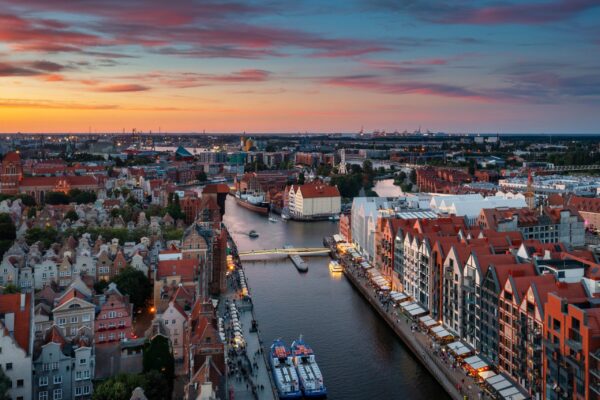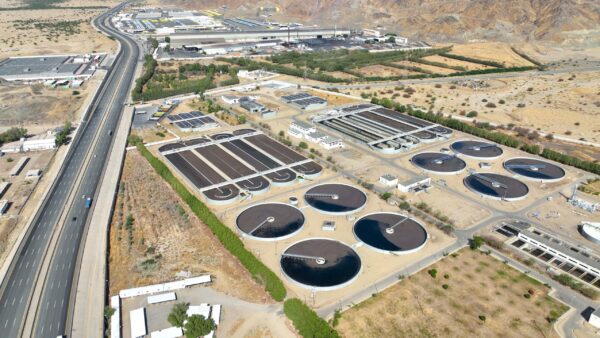
August 27, 2025 | Articles

Hill International is working diligently to hand over by next summer the second phase of a new headquarters building for leading Spanish bank, BBVA. Located in the Las Tablas district on the outskirts of Madrid, the facility will be home to some 6,000 employees. The project, which primarily comprises a Plaza and a Tower, will have a total built-up area of 250,000 square metres, including 114,000 square metres for offices and services and 3,000 parking spaces.
The Tower which is being built in the shape of a sail, is of 19 floors rising 93 metres from the ground level Plaza, which comprises a three-storey building. The project is among the three largest headquarter office complexes in Spain and the biggest building project in the country, Marian Prieto, Hill Project Director based in Hill International’s Madrid Site office. “The facility is being built in two phases, with the first stage being handed over in July 2013,” he said.
Hill is acting as the project and construction manager for the phase 1 development and is providing only PM services for the next phase. The first phase represented over 35% of the total construction work on the project and was completed in the summer of 2013 with employees moving in, Prieto said, adding for the second phase 60% work is over. “We started work on this contract in 2007 and it has been a long haul for us,” she said.
For Hill International, with global project and construction management experience and expertise in handling claims cases, the BBVA Headquarters building contract was awarded through a competitive tendering process. In the past, the company had worked on a contract to refit the old headquarters building of BBVA and that came in good stead in being awarded the job for the new building, Prieto said.
The reputation forged by Hill in the Spanish market, specifically coupled with the work that Hill International carried out in the landmark 250-metre high Repsol Tower in Madrid also acted as another factor in the company’s favor, Prieto noted. Hill International today has around 30 of its staffers working on the BBVA project, a majority of them being very conversant with the Spanish construction market and had also worked on the Repsol Tower.
CHALLENGES TO BE OVERCOME
The BBVA Headquarters project came with its share of challenges, however. The design had to be adapted to the climatic conditions to make an efficient use of energy resources by providing ample natural daylight, Prieto said. At the same time, there was also a need to ensure the overhanging floor plates and the structure keep direct sunlight away from the workspaces. “This minimizes the need for artificial lighting and air conditioning, which account for the greatest energy consumption in office buildings,” she said.
Also, a major technical challenge, Prieto said, that Hill had to deal with was all the floors in the Tower are post-tensioned, negating the need for any beams to be placed. A major unique element of the BBVA Headquarters building is the use of natural resources to conserve energy and also ensure its reduced usage. The project was design by Herzog & de Meuron and the facility is adapted to the climatic conditions and makes efficient use of energy resources by providing ample natural daylight, while the gardens and alleyways are fully shaded in the summer months.
The overhanging floorplates and a brise-soleil structure keep direct sunlight away from the workspaces and this minimizes the need for artificial lighting and air conditioning. Besides, ventilation is only needed to ensure the circulation of fresh air in the office spaces, with there being an option to open the windows for cross –ventilation. Lastly, retractable elements in the roof also help to control the temperature of the gardens, while the water that regulates temperature of the floor slabs is geothermally cooled or warmed. Photovoltaic cells on the roofs as well as rain and grey water processing complete the overall sustainability concept.
THE SPANISH MARKET
These are possible changing times for the construction industry in Europe, including Spain, with investments likely to increase over the coming few years. Construction in Spain has been in depression since 2007, mainly due to the housing bubble exploding, but also due to a major reduction in public expenditure on infrastructures and public building. However in 2014, for the first time in many years investments by the public sector are showing definitive signs of an increase, Prieto said, noting the mood in the building sector in particular seems to be upbeat as foreign investors are investing capital in the local market.
The investments come at a time when major Spanish contractors with experience of implementing major infrastructure projects, particularly high speed rail and large transportation facilities are waiting in the wings to snap up new contracts in the home turn. “Technically however they are among the best, if not the best. But, as the global economic recession hit in 2008, they looked overseas and have been very successful in securing projects like the Panama Canal and the Mecca-Medina high speed rail,” Prieto said.
Future investments in Spain’s construction sector will open up opportunities not just for contractors, but also project and construction managers. Hill International, with its proven expertise is waiting in the wings to spread the company’s foot print in not just that market but also the continent of Europe.
Share

August 27, 2025 | Articles

August 12, 2025 | Articles
Hill Welcomes Ben Schwenk as Senior Vice President in the Kingdom of Saudi Arabia

July 27, 2025 | Articles
The Infrastructure Puzzle: Robert Regalado’s Wholistic Business Development Approach

July 13, 2025 | Articles
Tech-Forward Contracting: A Much-Needed Construction Solution

June 23, 2025 | Articles
Jeffrey Hurley Joins Hill’s Northern California Rail Practice

June 23, 2025 | Articles
Ready, Set, Grow: First VP Chad Koelling Takes Charge of Hill’s Mountain West Region

June 8, 2025 | Articles
PMO in Saudi Arabia: The Holistic Approach to Realizing a National Mega-Portfolio